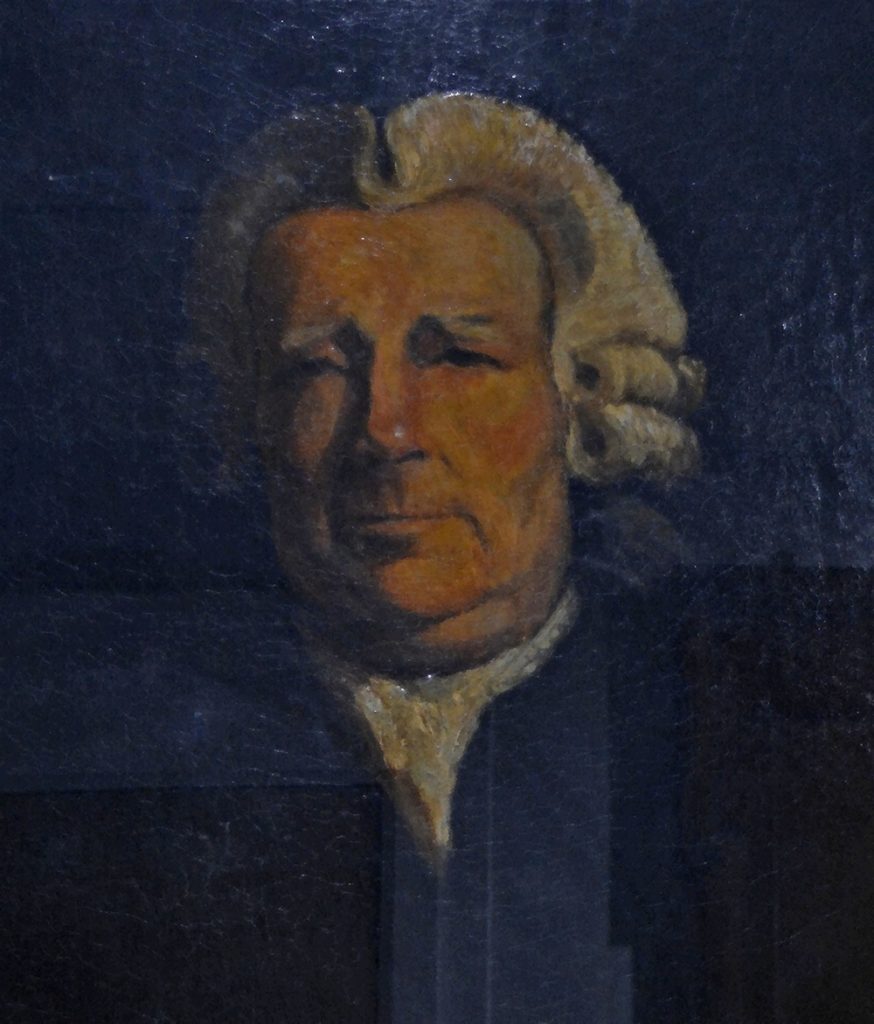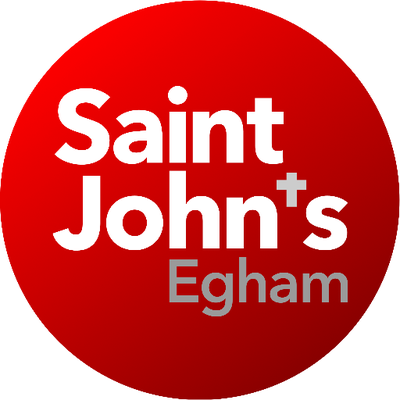St John’s Church building at 200 – Part 3
Celebrating the bicentenary of the current building of St John’s Church, 1820-2020
Notable Connections
The current church was built at a time when “England was still flush with pride over Waterloo, Karl Marx was born in Prussia, Beethoven was still composing, and the stagecoach rattled past” as described by John Northridge.[1]

Image Credit: With kind permission of the Principal.
The current church was built at a time when “England was still flush with pride over Waterloo, Karl Marx was born in Prussia, Beethoven was still composing, and the stagecoach rattled past” as described by John Northridge.[1]
Henry Strode (1645-1704) was born in Egham, and while he lived in London for most of his life, he frequently visited Egham for business and to see family. He was involved in the parish vestry and was chiefly responsible for maintaining the fabric of the church and distributing alms to the poor and needy.
He left a legacy to build almshouses and a school, now Strode’s College.
Edgell Wyatt Edgell (1769-1853) was one of the main contributors to the new Church building, built in 1817. The Edgell family had owned Milton Place; ‘an artistic and social center’.
He also founded a charity, the Wyatt-Edgell Egham Coal Charity with an endowment of about £52 a year to be administered by Trustees, to distribute coal to local ‘tenants in certain cottages in the Parish of Egham.”
He died in 1853, aged 84 and was buried in a vault under St John’s Parish Church in Egham.
Frederic Cournet was one of a group of political opponents sent away under the Second French Empire. Following his exile, he settled in London and was challenged to a duel several times by Emmanuel Barthelemy. Eventually he accepted and was fatally shot by Barthelemy on a field near Priest Hill on 19th October 1852. It is unclear why Englefield Green was chosen but it is likely that it was in an attempt to avoid unwanted attention from the law.
He was carried to the Barley Mow public house in Englefield Green before being carried a further 1.5 miles on the shoulders of Frenchmen to the Egham churchyard because St Jude’s was not built until 1859. Between 150 and several hundred Frenchmen in top hats are reported to have attended the address given at the graveside.
Memorials
Many memorials from the earlier church were transferred to the new building and can still be seen today. The interior and exterior of the church features monuments to a variety of local people. These include Robert Foster (of Great Fosters), Miss Sarah Honywood; “a most dutiful engaging and tender child of seven years”, the young officer who distinguished himself as the right-hand man of the Duke of Wellington at Waterloo as well as many of the vicars. The Magna Carta is also memorialised on the wall.
Sir John Denham (1559-1639) was Justice and Baron of the Exchequer and came to the district at the end of the 16th Century. In 1624 he established a foundation to house five poor widows aged 50 or over who had local connections. There is a monument to him inside the church as well as a moment to his wives. Following the death of his first wife, Cecile Kellifet, in 1612 he married Eleanor Moor and they had three children. The eldest, John, became Sir John Denham, the poet.
Like most churches, there is a war memorial in the churchyard, which has the following dedication:
“To the glory of God and to the hallowed memory of those residents of this Urban District who lost their lives in the world wars
1914-1918
1939-1945”
EGHAM WAR MEMORIAL
There is an additional plaque in the entrance to the church dedicated to those who lost their lives in the 20th century wars.
In addition to the pulpit dedicated to Reverend A C Tranter, there is also a memorial to William Trevor Nicholson who was vicar from 1879 until his death in 1917. He is remembered with the phrase “his generosity to the poor was unbounded”. One example of the generosity of him and his wife can be found with the presentation of Memorial Buildings, Denham Road to the committee of local Young Man’s Christian Association (YMCA) in the late 19th century by ‘the wife of the Vicar of Egham’.
The Community and Congregation

Arthur Cecil Tranter was the vicar of Egham from 1917 until 1947. He was extremely passionate about remembering the Magna Carta and was hugely influential protecting the land at Runnymede. For many people the Magna Carta of 1215 still represents many of the principles of freedom and justice which are still relevant today. Rev. Tranter set up The Magna Carta Commemoration Committee sometime between 1921 and 1923, when the first commemorative activity to mark the date of the sealing of the Magna Carta took a place, with a procession starting from the church itself.
He also welcomed ‘hatless hikers and knickerbockered cyclists’ to his church in the mid-1930s in an effort to encourage people to attend church during their holidays in the area.
At the top of the stairs is a Union Jack presented to the church by the local council in June 1951 during the Festival of Britain.
The flag was once again of interest in 1950 when the then vicar, Rev. John Northridge was in the national press promoting Runnymede’s links to democracy to New York based air hostesses, Alice Carson and Eileen Nicholson. Sadly, the flag is in disrepair and no longer on display in the church.
St John’s Church in Egham has been involved in the establishment of a number of local churches and schools. Once such example is in Egham Hythe. As the population increased so significantly in the early 20th century it was clear to the Vicar of Egham that new premises were required. Land was acquired in 1919-20 with the support of merchant Mr. Edward Budgen and the Vicar of Egham started conducting services in the Sunshine Hut then on the site, renaming it St. Paul’s Mission Hall shortly after.
Bishopsgate Evangelical church in Englefield Green was established at the end of Kings Lane in 1894 by Mrs. Nicholson, the wife of the Vicar of Egham, primarily as a mission Church to workers on the Windsor Great Park Estate and Englefield residents.

Image Credit: Egham Museum P1089
She also set up other small Churches in the district. Her vision was to bring the Gospel of Christ to all in the neighbourhood.
St John’s Church is not only well-known locally but has featured on national television. On 15th June 1952 an address was broadcast from the pulpit of the Church in the General Oversees Service of the BBC. The Church also featured on the ITV in the Live London Weekend Service broadcast on December 2nd 1980, 10.00am to 11.00am
More recently, Rev Jeff Whattley was on the One Show during the floods of 2014 in his rowing boat.

In partnership with St John’s Church
[1] ‘Let Me Introduce You, A Little Guide’ by John Northridge, 1949, p.7


